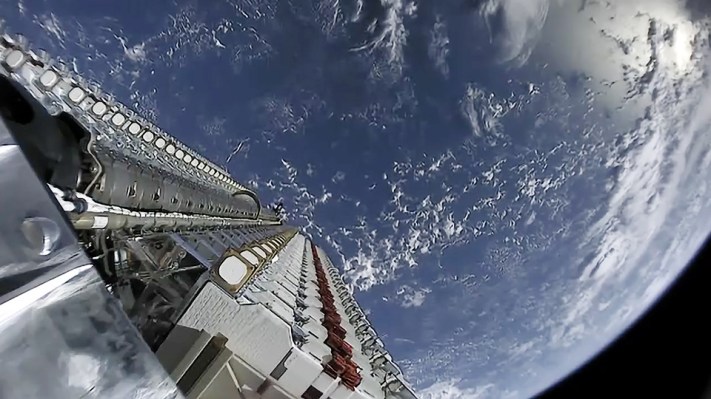SpaceX CEO and founder Elon Musk has shared more details about when in 2020 we can expect the company’s Starlink low-latency, high-bandwidth satellite internet service to actually be available to customers. He said on Twitter that a private beta for Starlink would begin in around three months, with a public beta to kick off roughly three months after that.
The initial beta test will apply to those located in “high latitudes,” Musk added. To date, SpaceX has said that Starlink service will initially be made available to customers in Canada and in the northern United States in 2020, with additional service expansion to follow to other parts of the world throughout 2021. On Twitter in response to a question about whether Germany counts as “high latitude,” Musk said that it does, indicating beta service at least may be available in more markets than the U.S. and Canada ahead of next year.
Late last year, Musk tweeted saying he was using a Starlink satellite connection to do so, and since then the company has launched six batches of 60 satellites each to build out its network. The small satellites work by flying around the Earth in low orbit, passing off connection between one another to ensure consistent service is provided to ground stations. They orbit lower than geostationary communications satellites, which provides latency and speed benefits, but don’t remain in a fixed position so a large number of them are required to provide consistent connectivity.
SpaceX still has other hurdles to overcome in order to make its timeline, including continuing to prepare and launch more Starlink missions despite the challenging working conditions in place due to the COVID-19 pandemic. The company also still needs to secure authorization form Canadian internet and satellite operation regulators before service goes live in that country, and it isn’t yet listed as an authorized provider on the Canadian government’s official website.
Starlink ultimately aims to provide low-cost, high speed broadband connectivity to customers globally, with the specific goal of offering service to customers who don’t currently have reliable or quality access due to their remote location. A number of satellite and other projects aim to address this gap, including Alphabet-owned Loon, which is using stratospheric balloons to act as cell towers to provide access to hard-to-reach places.
